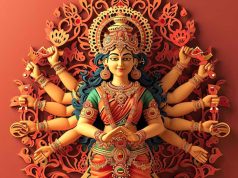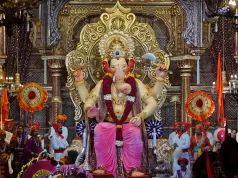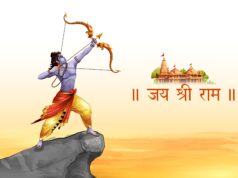Dussehra 2022: Here’s all you need to know about whether Dussehra, also known as Vijayadashami, will be celebrated on October 4 or 5 this year, history and significance of the Hindu festival and puja muhurat along with celebration traditions.
The term Dussehra is more common in North Indian states and Karnataka while the term Vijayadashami is more popular in West Bengal. It is that time of the year when the famous Ramlila is enacted, magnificent fairs are organized, people throng in huge numbers to see Ravan effiges go up in flames and the smell of traditional desserts and delicacies is in the air as Hindu devotees gear up to celebrate the festival of Dussehra.
It falls on the tenth day of Sharada Navratri but the celebrations and cultural practices differ with different region of culturally diverse India yet amazingly, the essence of the festival remains. Here’s all you need to know about whether Dussehra, also known as Vijayadashami, will be celebrated on October 4 or 5 this year, history and significance of the Hindu festival and puja muhurat along with celebration traditions.
Date:
The Hindu festival is observed on Shukla Paksha Dashmi during the month of Ashwin as per Hindu lunar calendar and a day after Maha Navami or at the end of Shardiya Navratri. This year Dussehra will be celebrated on October 5, 2022 with much fervour and zeal and mark an end to the Navratri festival that began on September 26.
History:
Dussehra denotes victory of good over evil and there are two stories that are associated with the festival in Hindu mythology. It is said that it was on this day that Durga defeated Mahishasura after a fierce battle lasting for more than nine days. As per another mythology, Dussehra is celebrated to mark the victory of Rama over ten-headed demon king of Lanka, Ravana.
Puja Muhurat:
According to Drikpanchang, the puja muhurat falls on October 5 from 02:07 pm to 02:54 pm while the Durga Visarjan muhurat is from 6:16 am to 8:37 am.
Significance:
Navratri — the nine days of celebration of each form of Goddess Durga — culminates with Dussehra, the tenth day. It is also called as Vijayadashami, the day of victory. While some associate it with the epic battle of Ramayana, others do so to commemorate Goddess Durga’s victory over the demon Mahishasura.
Dussehra, also known as Vijaydashami or Dasain in certain parts of our country, makes way for Diwali celebrations. One of the most important and widely celebrated festivals, the festival of lights or Diwali marks Rama’s homecoming after his victory against Ravana and is celebrated twenty days after Dussehra but the main ethos of Dussehra festival is that of good triumphing over evil and it is on this day that people pray for prosperity and good health.
Celebration:
In North India, Dussehra is celebrated with much fanfare and Ram Lila, an enactment of Rama’s story, is organized on all nine days of Navratri culminating with the killing of Ravana and burning of his life-size effigy on the day of Dussehra or Vijayadashami along with those of Meghnad and Kumbhakaran. Dusshehra also signifies getting rid of sins or bad qualities as each head of the Ravana symbolizes one bad quality.
Dussehra for many means beginning preparation for Diwali, which is celebrated 20 days after Vijayadashami, the day when Lord Rama reached Ayodhya with Sita. Worshipping Shami tree on the day of Vijayadashami holds a great significance in some parts of the country as it is believed that Arjun hid his weapons inside Shami tree during his exile.
Shami Puja is also known as Banni Puja and Jammi puja in some of the southern states in India. On Dashami, devotees also bid adieu to Maa Durga and the visarjan is done either during Aparahna time or Pratahkala while Dashami Tithi is prevailing.
The tenth day is also known as Vijayadashmi when the idol of Maa Durga is immersed in water and the devotees hope that she keeps an eye on them while warding off all the evils and miseries. Both Dussehra and Vijayadashmi mark the victory of good over evil and devotees enjoy the festival by binging on various cuisines with family and friends.










